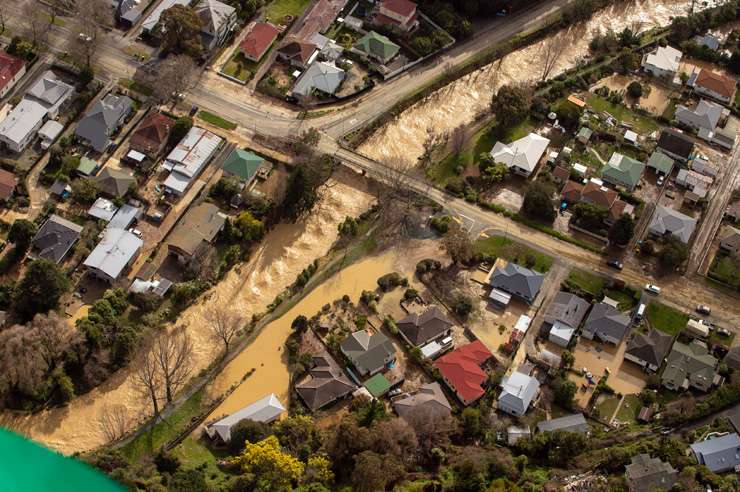Homeowners could be left severely out of pocket if their house burns down or is destroyed in a flood and the amount their house is insured for is less than the skyrocketing costs to replace it.
With building costs rising well above the annual inflation rate and prices for the construction of a new house in September increasing by 17%, according to Statistics NZ, a considerable number of Kiwis may be faced with covering the shortfall to replace their house if it’s damaged in a disaster.
And the number of people who are underinsured is quite high with a recent survey by CoreLogic revealing that about a third of respondents are not confident their property is adequately insured.
Insurance Council of New Zealand spokesperson Christian Judge said people should check their insurance policies and specifically whether the sum the property is insured for will actually cover the cost of replacing the property.
Start your property search
The sum insured is the maximum amount a homeowner will be paid out by their insurance company in the event of a “total loss” such as in the event of an earthquake or other natural disaster.
Some insurance policies will simply shell out the cost of replacing the property in certain circumstances, but in other cases they will only pay up to the sum insured so it was important to check the details, he said.
When Judge worked out the replacement cost of his own home last year, he realised that it was underinsured by $200,000, which would have been a tough pill to swallow if he had been faced with rebuilding his house.
The easiest way for people to work out the replacement cost is to use an online calculator which most major insurers have to give a good idea of the costs and should include things such as clearing the site, costs or consents and getting drawings done.

Homes impacted by the floods in Nelson earlier this year. Photo / Tim Cuff
“It’s really important to focus on this being what would it cost to replace it. It’s not what you paid for it, it’s not what the house next door sold for – people just shouldn’t estimate this without using the tools really.”
While ICNZ’s members are aware that some clients will be short if they have to claim, other than recommending people check their policies at the time of renewal it was ultimately up to the property owner, he said.
“Insurers can’t compel people to up their sum insured – they can’t just say we think your sum insured should be this so we are going to charge you accordingly because the consumer gets to choose which insurance they buy.”
CoreLogic chief economist Kelvin Davidson said people who haven’t reviewed their insurance for several years are likely to be underinsured especially as some insurance companies had moved away from replacement value to only paying out the sum insured amount.
“The onus is on the customer now to make sure they are adequately covered so if they haven’t checked it for three or four years, they are likely to be under insured for that sum insured – what it would cost to get the thing rebuilt again.”
He said there is a misconception that some people don’t think the rebuilding costs will impact them – but it will if their house is struck by a disaster and they need to replace it.
“If you are underinsured and you lost your house, you are probably going to have to rebuild a smaller house or a different house so it’s important to keep up with it.”

CoreLogic chief economist Kelvin Davidson: “You can actually get a surprisingly amount of extra cover for not much money.” Photo / Peter Meecham
The sum insured also has nothing to do with what they paid for the property or the government valuation but is about how much it costs to rebuild per sqm, he said. The increase in premium is also quite minimal.
“You can actually get a surprisingly amount of extra cover for not much money. It’s actually quite a cost-effective thing. You can easily upgrade your sum insured by $100,000 or $200,000 and it doesn’t necessarily cost you too much extra.”
With building costs continuing to grow so quickly, Davidson said people should not only use the relatively easy-to-use online insurance calculators to update the value, but also consider including a buffer as the rebuild cost is likely to change significantly within a 12-month period of the policy being renewed.
“Houses don’t burn down that often, it’s not a common thing, but if it happens to you, it’s obviously going to be a pretty big deal so it’s important to keep it up to date,” he said.
“For the amount of money on the line, it’s a pretty good thing to do.”
AA Insurance head of pricing and underwriting Chris Taylor said it is critical that policy holders are comfortable with their sum insured amount, especially as the current inflationary environment is impacting everything from labour to building products.
“People may find themselves underinsured if they have not checked their home’s sum insured value for several years. We advise homeowners to regularly check their rebuild value, using resources like the Cordell Sum Sure calculator or seeking advice from a building professional.”
Taylor said they also contact customers who appear to be underinsured and walk them through using the calculator and how setting a sum insured figure works in practice.
While increasing the sum insured may result in the customer’s premium increasing, Taylor said there were options available to customers to help manage their premiums such as a higher excess.




















































